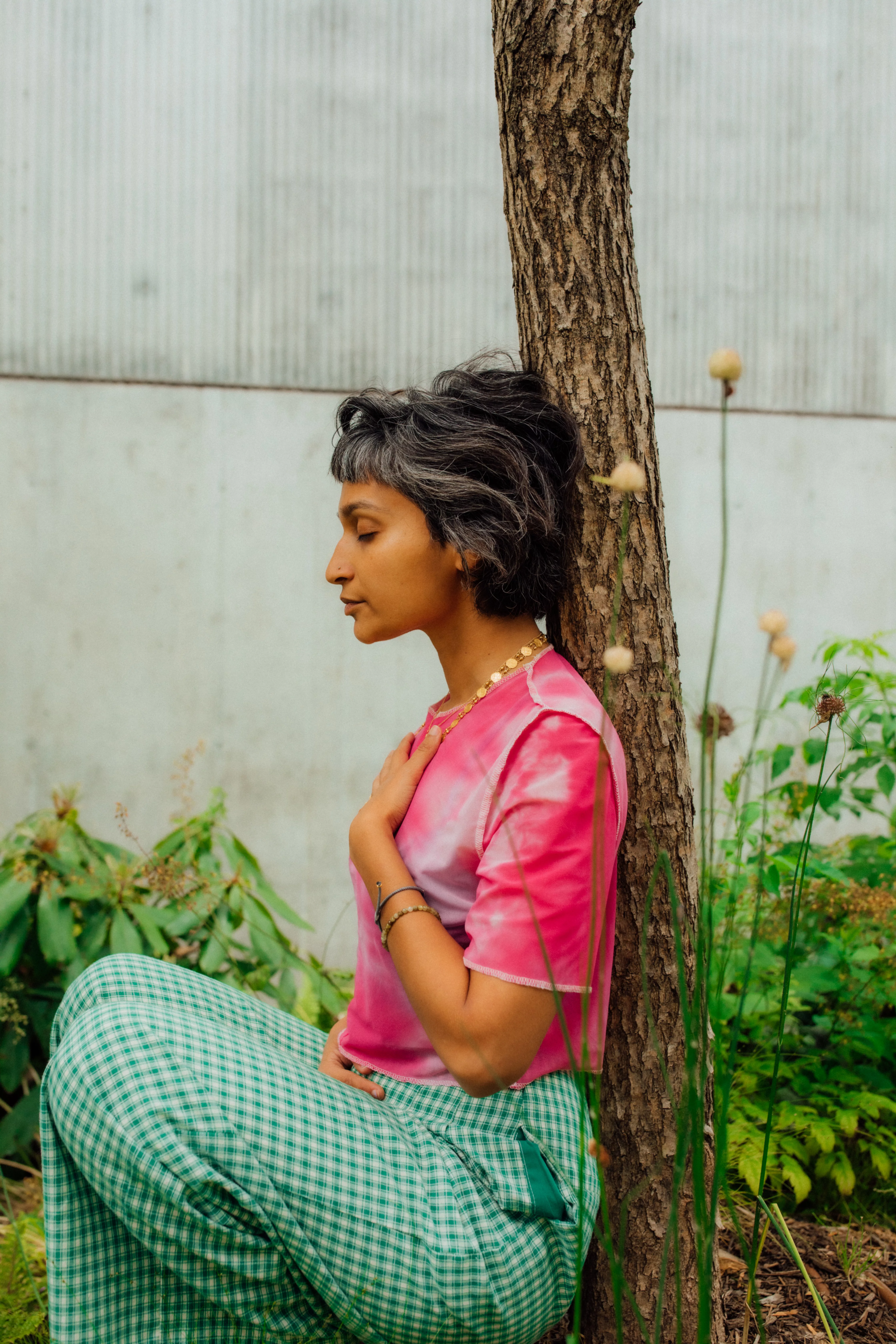
Himali Singh Soin met her first mountain when she was three years old, accompanying her mother to meet her father, an acclaimed mountaineer, at a base camp following an expedition around Mount Kanchenjunga.
“It was in Sikkim, which is in the northeast of India,” she recalls, “a place on the periphery increasingly marginalised by the centre.” A photograph is a stand-in for her early memory: young Soin, stands Lilliputian next to a giant Himalayan lily. “It was my first lesson—the natural world is so much bigger than us,” she smiles.
This was the first of the many voyages that the artist would accompany her parents on as a child, transcribing the sounds of trees in her journal as she ascended dense forests to jagged peaks. It was here, by foot and with family, that she learned the ways of the mountains. In the classroom, she was an outlier. “There was no way to express the lateral way that I was thinking, unless I wrote it down,” she reflects.
Soon, she set out on her own, again coming face to face with the vastness of Earth. She gazed up at an impenetrable sheet of stars while on a mountaineering summer course, and became transfixed with looking for patterns in glowing specks. “There were stories in those stars,” she says. “It was a reminder that constellations are of our own making.”

Later, in college in Vermont, nestled up in the Green Mountains, Soin came of age in a new range. “That was my journey into walking solitary, being with friends, observing tree lines and snow lines, fossils and rocks, and having sex, on a mountain.” Thrust into the Western world of categorization, where binaries offer a structure to understand too rigid for the stars. Soin instead turned to indigenous echoes of the past. She was in pursuit of a more porous way of speaking about nature: a language that captured the ineffable qualities of the land that she first discovered in the Himalayas as a child.
“I come from a place where landscapes are sacred (though modernity blindsides us into forgetting this),” says Soin. “To ‘climb’ a mountain like Mount Kailash in Tibet, you must go around it three times. You don’t go up it,” she explains. Rituals underscore a holistic and cosmic relationship with the foliage, snow, and rocks. “Western mountaineers that came to India to climb would say ‘we conquered the mountain.’ And my dad and our sherpa friends say, ‘why not let the mountain embrace you.’”
Soin has returned to the Himalayas over the years. For one project, she grew a bio-remediac garden that pulls radiation from the air in response to the belief held by generations of locals that a Cold War-era nuclear device lies buried under the terrain. “I kept encountering the thin place between the toxic and the sacred,” she says.
The garden is part of her ongoing series, Static Range, which began in 2020 with a stamp from 1988 emblazoned with a photo of the Nanda Devi mountainside taken by her father. In the eponymous video, Soin exposed the stamp to radiation which caused the image of the mountain and the word India to dissolve. The corresponding flip book of stamps requires the reader to tear off the perforated pages and lick them and stick them. “The only way you can really read it is by destroying it.”
This year, Soin will continue Static Range with an installation from the Marshall Islands, “which explodes the nuclear sublime, colonialism and the exchange of messages across vast temporalities,” she says. She will also debut a film about salt set in 19th Century India and expand her bird opera, An Omniscience, in collaboration with David Soin Tappeser.
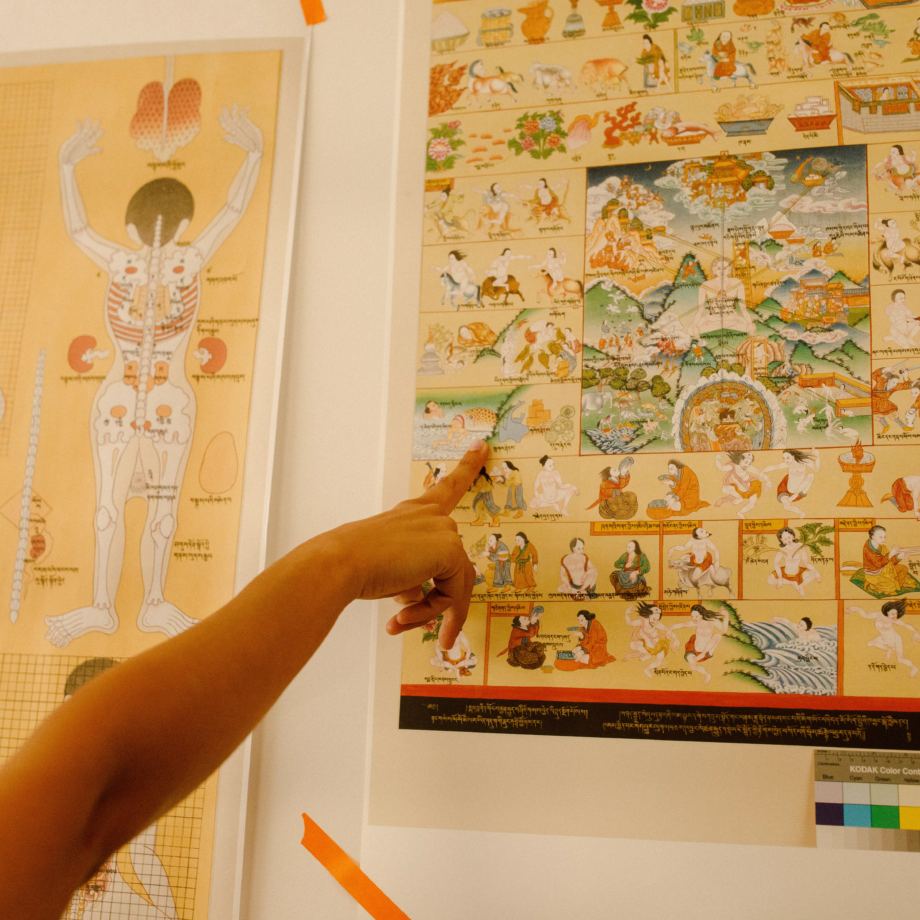
“I was reading Etel Adnan’s Journey to Mount Tamalpais before you arrived,” she tells me as I sit across from her, stacks of books (some that she wrote) and ephemera between us. “She was this amazing Lebanese poet that lived opposite Mount Tam in San Francisco,” she continues. “At one point she writes, ‘do not go to the mountain unless you know that the mountain needs you.’”
Today, Soin has transmuted her mountaineering background into something more fluid, grounded in an art-making practice that encompasses the very values that she learned along the Himalayan range. A writer and interdisciplinary artist based between London and Delhi, Soin has created operas using the calls of birds, transcribed the sound frequencies of mountain ranges, and dug through vast and varied archives to uncover lost stories and sounds of the mountains.
Her works often live many lives across mediums. In one work, a woven tapestry (made from ethically extracted silk) features the peaks and valleys of the soundwave from a piece she made called Antarctica was a queer rave before it got busted by colonial white farts.
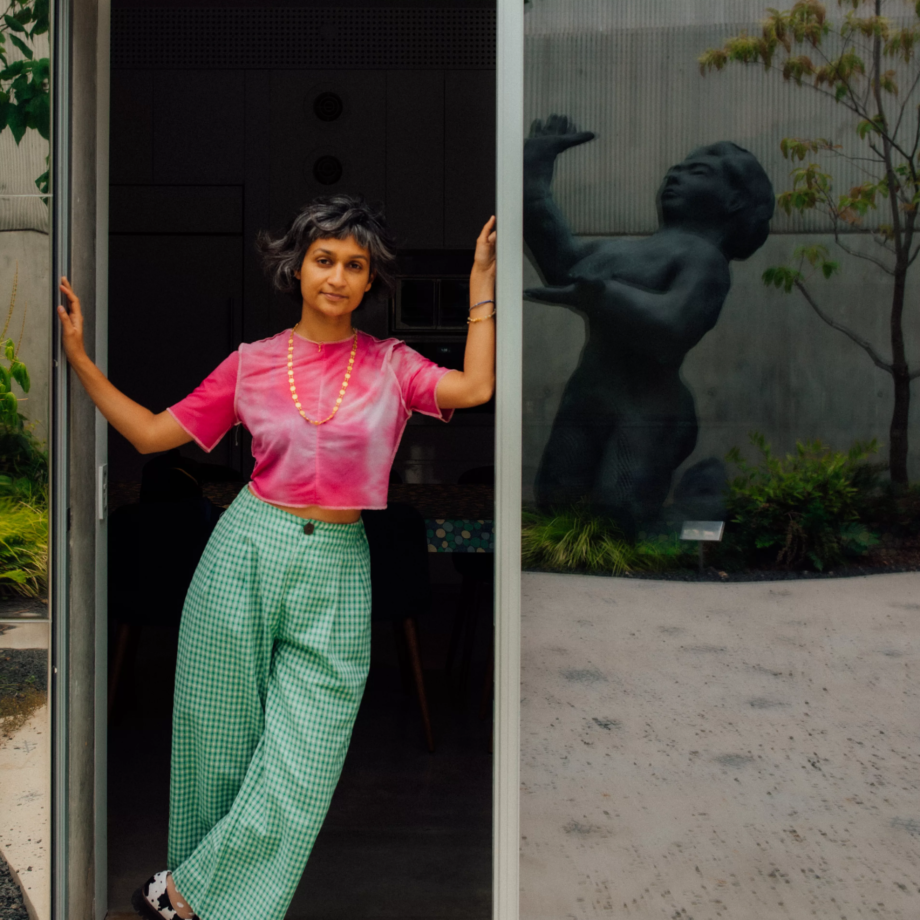
“Art can step in to say what you cannot say, and to not say what you cannot say,” Soin offers. “Within that silence and those gaps of translation, you’re able to communicate while also remaining unintelligible to the structures of power that would otherwise erase such narratives. Poets are often the greatest threats to fascism.” The artist whose love for her homeland reverberates in her work notes that to directly speak out risks exile. (Upon my own research, I learn about the Indian government’s tendency of weaponizing false historical narratives against Muslims, destroying mosques and ancient temples, censoring those who speak out, and blocking access to news sites and imprisoning journalists.) Who was here first? The question rings across the world and reverberates especially loud at a time when wars are rendering land and lives unlivable.
“In the midst of current politics, in the midst of this fragmentation, in the midst of obsessions with identities as they relate to the self and not the collective: how do we move across this?” asks the artist. “Especially when you’re in a post-colonial nation state,” she adds. “How do we dismantle such rigid demarcations and make space for more watery ways of being?” Through her expansive practice, often rooted in series that ebb and flow across time, a crystallised eulogy of loss emerges: loss of home, loss of land, loss of identity.
Post partition, in India, “people arrived in chains, they came through war, they came through colonialism,” says Soin. “They came walking. They came over the oceans, and they carried with them not only their culture, their language, their spices, but also their ideas and their own metaphors.”
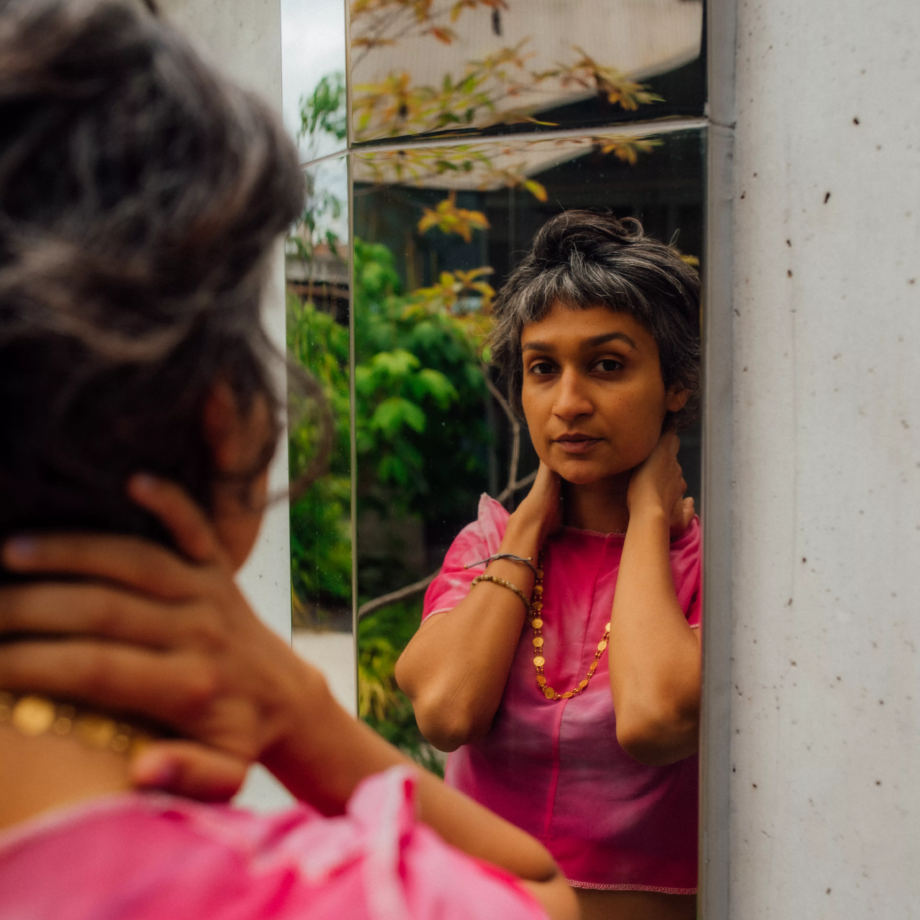
Within the histories and traditions that Soin seeks to uncover and reframe in the present, a new language for seeing and listening emerges. For the artist, it is poetry, which she sees as the genre of the times. The openness of metaphors, often not afforded in strictly academic or historical documents, captures the truths often repressed or erased by colonial powers.
“I’m sitting with my sadness at the war and thinking about how we will adapt to this evolving post-natural world we have made for ourselves,” she says. She is mediating on how souls—and by extension, art—can affect policies and serve as a catalyst for change.
I wonder if she sees the duality of poetry as a sort of healing balm, a way to process and release. “I don’t know if it takes away the harm as much as allows you to enter into it from a different present, see it as a point in a long line of ancestral struggles,, so that abolition becomes everybody’s work,” she muses.
Soin talks about the rogue liberation that an open text can offer—a looseness of interpretation, “that moment in the book where you stop reading the book, and the book begins to read you.” One of her video essays plays on her computer screen: flashes of clippings from old newspapers, excerpts from ancient texts, illustrations of mountains, diagrams, religious iconography, and the story of a clairvoyant who was used by the British Empire in India to travel with her mind to the Arctic to find lost ships. The film is scored to a sparse, cinematic soundtrack of humming drones and plucky strings. “It tells the tale of how Victorian Britain was obsessed with the idea that the Arctic ice would descend into Britain and leave it a frozen wasteland,” she says.
In her video with footage from her trip to the Antarctic and the Arctic polar circles in 2017 (from her multidisciplinary series We are opposite like that, 2017-2022), a ships’ portholes stare upon icy seas before shifting direction in a blink. “Its eyes are actually looking at the viewer, asking the viewer, who is witnessing who? Who is culpable? Who is complicit?” she says. “I like to use shadows, mirrors, lighting, translucency, haze, opacity—these methods of visibility and invisibility and therefore magic—to beckon and then to lose the viewer.”
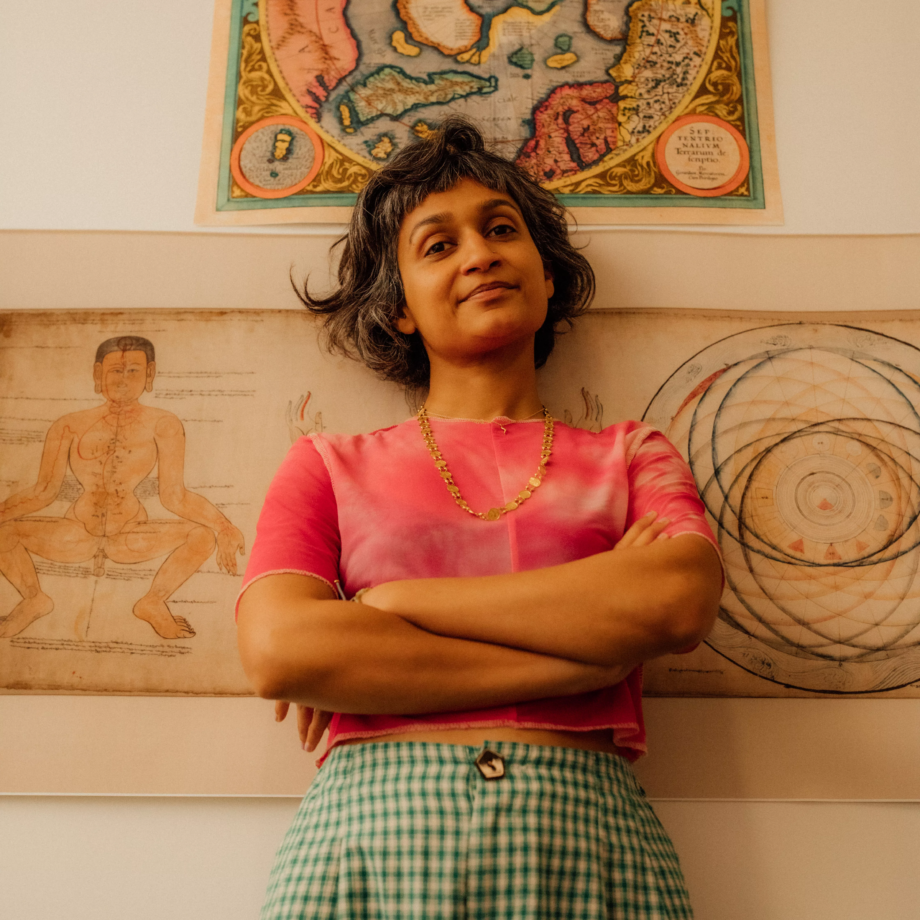
The striking scenes of the icy mountains are intercepted with shots of Soin trekking across the horizon, cloaked in a metallic space blanket fastened by a brooch made from coral and turquoise beads found in the Himalayas—a silver turban atop her head, absorbing and reflecting the glacier. “She is from outer space, but she is also a brown woman from the global South,” she says of the character, who she dreamed up in a community garden in London and who has become a recurring figure in her work. “She’s an alien, an extraordinary other.”
Recently, her pursuit of Mount Meru, the sacred mountain said to be the centre of the universe, led her to New York City. (In 1986, her father was the first Indian mountaineer to ascend Meru while her mother was pregnant with her. When Soin was born, her parents chose a name that means “daughter of the mountains.”)
Artists have long been captivated by the pull of Meru.“This is the final scene in Jodorowsky’s Holy Mountain, and the mountain is Meru,” Soin says, pulling a still from the film. “And in René Daumal’s Mount Analogue, a metaphorical expedition, the mountain is Meru.”
She materialised in the city, metallic in search of Meru. She set out to explore Tibetan and Himalayan art archives, wearing a hand painted silver unitard. In the big, eccentric city, no one batted an eye at her shiny armour. She was left to wander the collections in peace.
In her studio at Amant, where she spent this spring, she points to a series of colourful illustrations pinned to the wall. “These amazing images are Tibetan medical diagrams from the anatomy section of the American Natural History Museum, which is wild,” she emphasises. “What is very upsetting is that they are under the label of China, because it is a federal institution. [When you write your story, you should keep that in].” She points to another poster of a body-map, where Mt. Meru is indicated as the heart.
Beyond Meru being a particular mountain, Soin is interested in the desire for sacred landscapes, especially when the mountain is unreachable and melting, and Tibetans are in exile. “How do I create an expedition of liberation or salvation that makes this mountain accessible, that brings these sacred landscapes to wherever you are?” she asks. “It’s a kind of a pilgrimage text.”
Words by Meka Boyle
